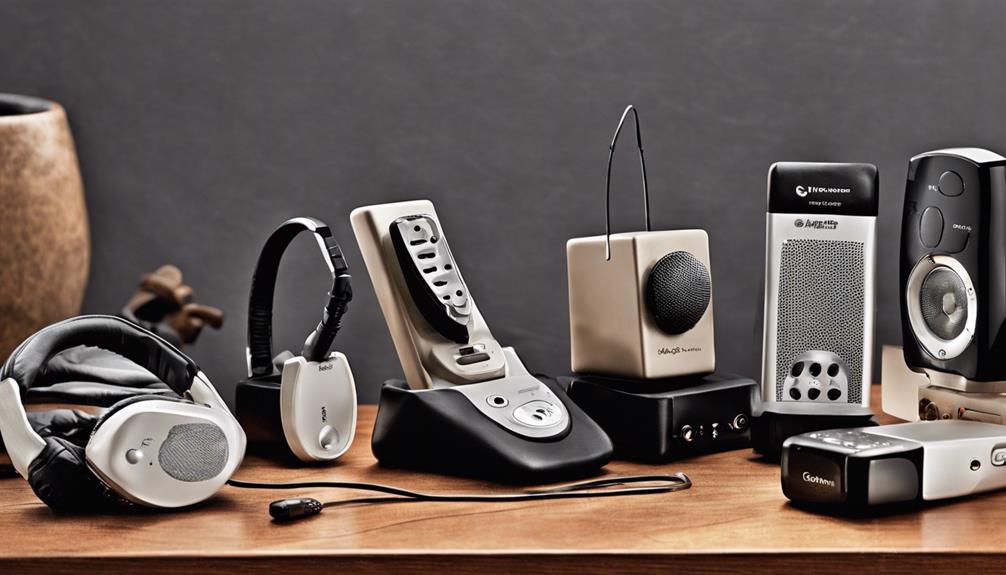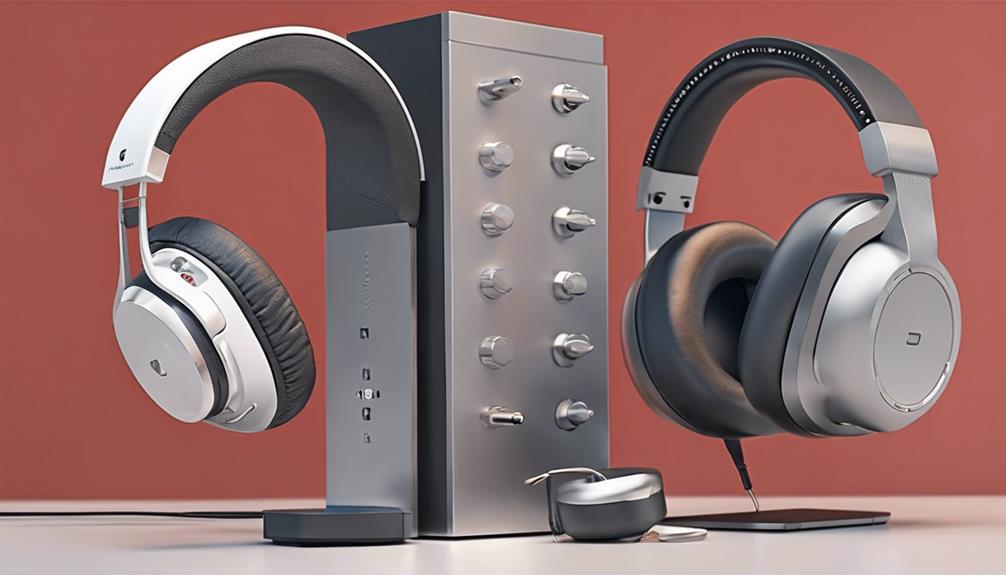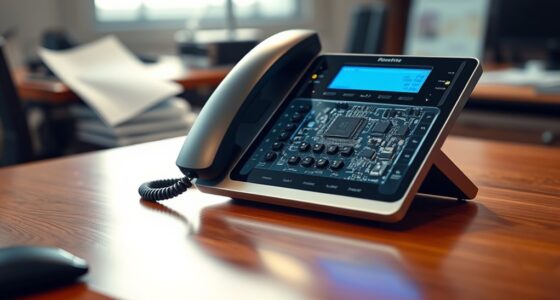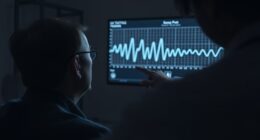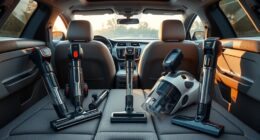Here, we present the “Top 5 Reviews on Assistive Listening Devices,” highlighting the best options for individuals facing hearing impairments.
These reviews meticulously analyze a range of ALDs, offering insights into their features and functionalities.
From enhancing sound clarity to minimizing background noise, these devices cater to diverse needs.
Stay tuned as we unveil the top picks that could significantly impact the way we perceive and interact with sound.
Key Takeaways
- Sonic Bomb Alarm Clock with 12V bed shaker and eco-friendly power technology.
- Clarity Portable Telephone Handset Amplifier offers 40dB amplification and noise reduction.
- Reizen Mighty Loud Ear 120dB Sound Amplifier with built-in microphone for clear sound.
- William Sound Pocketalker Ultra Amplifier enhances sound clarity, compatible with or without hearing aids.
Sonic Bomb Alarm Clock Review
We found the Sonic Bomb Alarm Clock to be a game-changer for heavy sleepers, thanks to its innovative 12V bed shaker feature. This Assistive Listening Device (ALD) not only caters to individuals with mild hearing loss but also promotes Hearing Health through its effective wake-up mechanism.
The incorporation of green power technology not only enhances its eco-friendliness but also ensures sustainable energy consumption, benefiting both users and the environment. The dual time settings option, available in 12 or 24-hour formats, adds to the convenience this alarm clock offers.
Moreover, the customizable alarm duration and snooze time allow users to personalize their waking experience. The bright red LED display with a five-level dimmer further contributes to its user-friendliness, ensuring easy visibility at any time of the day or night.
Clarity Portable Telephone Handset Amplifier Review
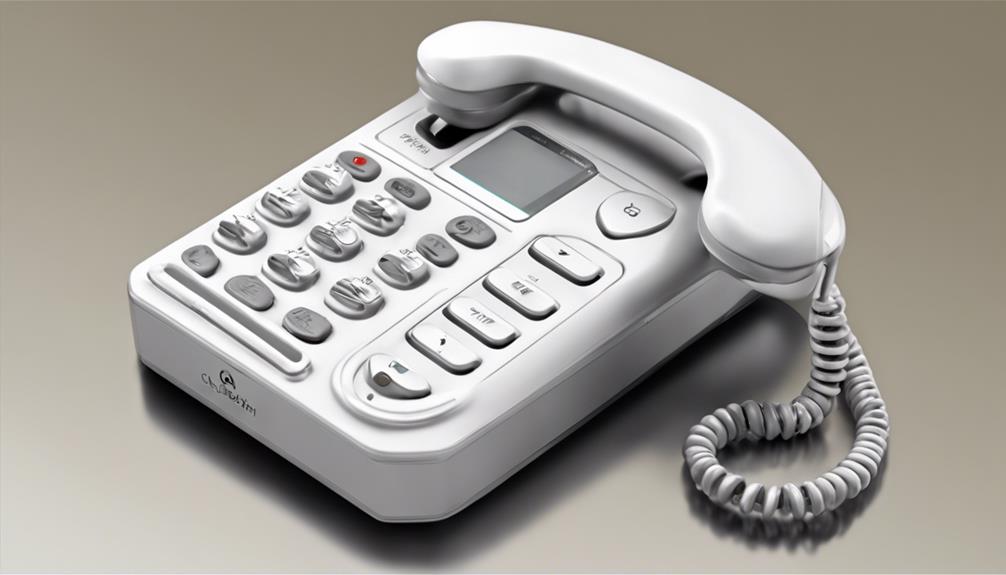
Transitioning from the innovative Sonic Bomb Alarm Clock, the Clarity Portable Telephone Handset Amplifier stands out as a FSA-approved device providing up to 40 decibels of amplification for enhanced phone call clarity. Here are four key features of the Clarity Portable Telephone Handset Amplifier:
- Easy Adjustments: Slide controls enable effortless volume and tone adjustments, catering to individuals with varying degrees of hearing difficulties.
- Compatibility: Designed to work with most phones featuring coiled cord handsets, this amplifier seamlessly integrates into your existing communication setup.
- Background Noise Reduction: The boost button helps eliminate feedback and background noise, ensuring a focused and improved phone call experience.
- Portability: Lightweight and portable, this device offers reliable performance, making it a convenient aid for individuals with hearing impairments seeking enhanced call clarity.
The Clarity Portable Telephone Handset Amplifier is a versatile solution for those looking to amplify phone calls and minimize disruptions caused by background noise or feedback.
Future Call Picture Care Memory Corded Amplified Phone Review
Enhancing communication clarity with sound amplification, the Future Call Picture Care Memory Corded Amplified Phone provides a range of convenient features.
This phone is designed to offer clearer calls through its sound amplification technology. With 10 one-touch memory keys for picture dialing, it enhances ease of use, making dialing quick and simple.
The programmable feature with pictures further adds to its ease of use, allowing for personalized settings. The phone's desk and wall-mountable design ensure convenient placement in any environment.
Additionally, the bright visual ringer and adjustable settings make sure that calls aren't missed, providing noticeable call alerts.
Reizen Mighty Loud Ear 120dB Personal Sound Hearing Amplifier Review
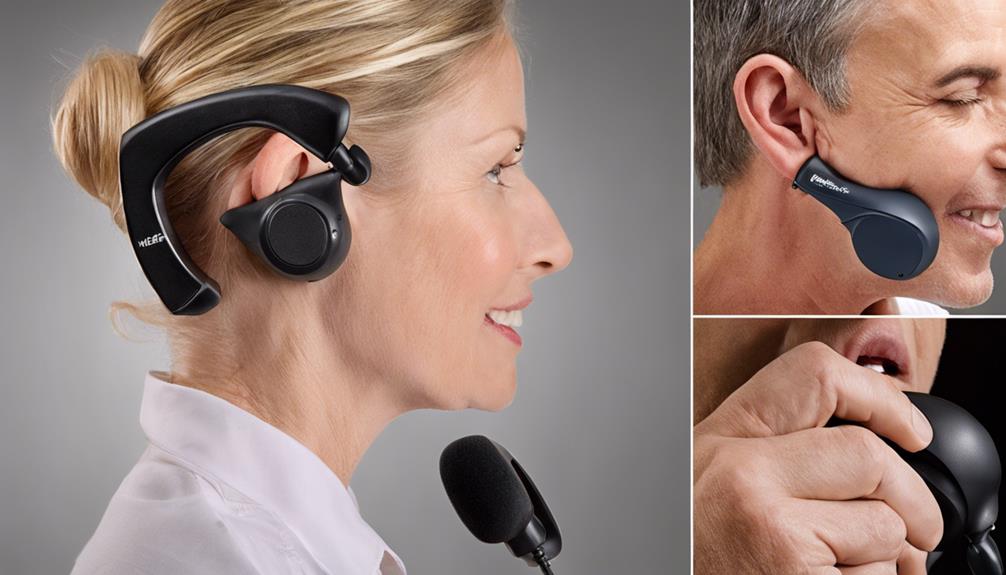
The Reizen Mighty Loud Ear 120dB Personal Sound Hearing Amplifier stands out for its exceptional 120dB sensitivity, offering amplified sound for improved hearing experiences. Here are four key features of this device:
- Built-in Microphone: Ideal for small group conversations, the built-in microphone captures clear sound, enhancing communication in various settings.
- Volume Control: Users can easily adjust the volume to suit their preferences, ensuring a personalized and comfortable listening experience.
- Dual Earphones: With dual earphones, this amplifier provides stereo sound, immersing the user in a more comprehensive auditory environment.
- Battery Life: Operating on 2 AAA batteries, this device offers up to 48 hours of use, providing convenience and reliability for extended periods of time.
The Reizen Mighty Loud Ear 120dB Personal Sound Hearing Amplifier is a versatile solution for individuals seeking amplified sound clarity and control in their daily interactions.
William Sound Pocketalker Ultra Personal Sound Amplifier Review
Utilizing innovative technology, the William Sound Pocketalker Ultra Personal Sound Amplifier offers customizable volume control for tailored sound amplification. This Hearing Amplifier provides fingertip adjustable volume control, allowing users to personalize their listening experience.
Its Portable Design, lightweight construction, and compatibility with or without hearing aids make it a versatile solution for various Hearing Needs. The device's impressive Battery Life of up to 200 hours ensures extended usage without frequent recharging.
The Pocketalker Ultra excels in enhancing Sound Clarity in Different Environments, enabling users to better understand conversations and audio in various settings. Whether in a crowded room or a quiet office, this Personal Sound Amplification device delivers clear, amplified sound to meet the user's specific hearing requirements.
Frequently Asked Questions
What Is the Most Commonly Used Assistive Listening Device?
The most commonly used assistive listening device is the personal sound amplifier. These devices are popular for enhancing hearing in various settings due to their portability and adjustable volume control.
They serve as cost-effective alternatives to traditional hearing aids and are found helpful by many individuals in daily communication and activities. Personal sound amplifiers offer a practical solution for those seeking to improve their hearing capabilities without the expense of traditional hearing aids.
What Is the Difference Between an Assistive Listening Device and a Hearing Aid?
When distinguishing between an assistive listening device (ALD) and a hearing aid, it's essential to understand that ALDs focus on enhancing sounds and reducing background noise to aid those with hearing difficulties, while hearing aids are specifically designed to address hearing loss through advanced technology.
ALDs aren't classified as hearing aids but offer benefits like sound amplification and clarity. Pairing ALDs with hearing aids can provide enhanced benefits for users seeking improved listening experiences.
Which Is Better Oticon or Starkey?
When comparing Oticon and Starkey hearing aids, both brands offer advanced technology and innovative features.
Oticon focuses on replicating natural brain processing with BrainHearing technology, while Starkey stands out with features like Livio AI and the Thrive app for personalized control.
Choosing between the two depends on individual preferences and needs. It's essential to consult with a hearing healthcare professional to determine which brand aligns best with your specific hearing requirements.
What Is the Best Hearing Aid for Critical Music Listening?
When it comes to critical music listening, we should seek hearing aids with high fidelity sound reproduction, advanced noise reduction technology, customizable settings, wide frequency response range, and Bluetooth connectivity.
These features ensure optimal music clarity, accuracy, and seamless streaming. By selecting hearing aids that prioritize these aspects, we can immerse ourselves in the music we love with enhanced enjoyment and appreciation for its intricate details and melodies.
Conclusion
In conclusion, assistive listening devices play a crucial role in improving communication for individuals with hearing loss. Did you know that approximately 15% of adults in the United States report some trouble hearing?
These top 5 reviews showcase the range of devices available to enhance sound clarity and reduce background noise, ultimately making a significant impact on the quality of life for those with hearing difficulties.

